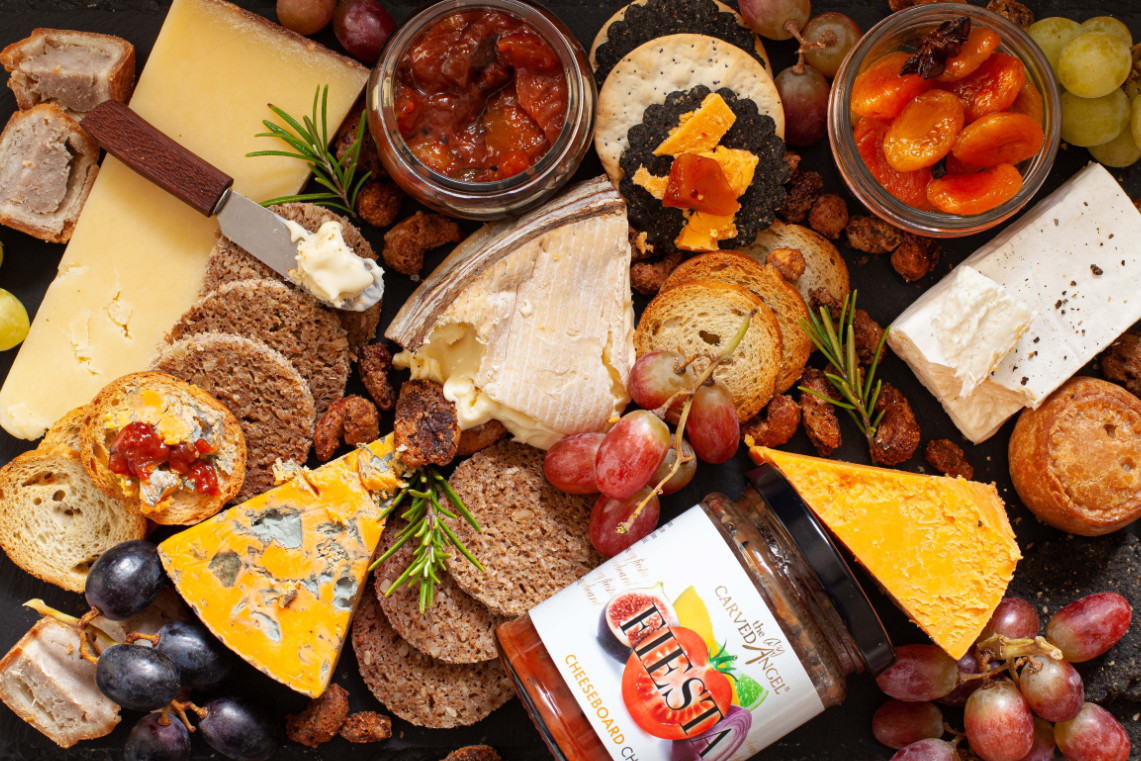A cheese board, also known as a cheese platter or cheese plate, is a delightful creation that combines artistry and culinary prowess. It’s a beautifully arranged assortment of cheeses, paired with complementary accompaniments, designed to tantalize the taste buds and visually delight your guests. Whether you’re hosting a sophisticated dinner party or simply enjoying a cozy evening at home, a well-crafted cheese board can elevate the dining experience and make a lasting impression. In this blog, we’ll explore the art of creating the perfect cheese board.
Selecting Your Cheeses
The heart of any cheese board is, of course, the cheese. The key to a successful cheese board is variety. Aim for a mix of textures, flavors, and milk types to appeal to a broad range of palates. Here are some general categories to consider:
- Hard Cheeses: Options like cheddar, Gouda, or Manchego provide a firm, aged texture with a variety of flavors.
- Soft Cheeses: Brie, Camembert, and goat cheese offer creamy, decadent options that contrast beautifully with the firm cheeses.
- Blue Cheeses: Roquefort, Stilton, or Gorgonzola provide a sharp and pungent flavor, adding depth to your cheese board.
- Washed-Rind Cheeses: These include options like Epoisses or Taleggio, known for their strong, aromatic qualities.
- Fresh Cheeses: Think of creamy, mild cheeses like mozzarella or ricotta, which provide a refreshing balance.
Pairing Accompaniments
The accompaniments on your cheese board are just as important as the cheeses themselves. These should complement and enhance the cheese’s flavors. Here are some ideas:
- Breads and Crackers: Provide an array of textures and flavors with options like baguette slices, whole-grain crackers, and crispbreads.
- Fruits: Fresh fruits like grapes, figs, and apple slices add a natural sweetness that pairs wonderfully with the saltiness of many cheeses.
- Nuts: Almonds, walnuts, and pecans offer a satisfying crunch and earthy undertones.
- Condiments: Mustard, honey, and chutney can provide a tangy or sweet contrast to the cheese.
- Cured Meats: Thinly sliced prosciutto, salami, or chorizo can add a savory dimension to your board.
- Olives: An assortment of olives, from green to black to stuffed, can bring a briny element.
Design and Presentation
Creating an eye-catching cheese board is an art form in itself. Here are some tips for presentation:
- Balance: Arrange cheeses and accompaniments evenly across the board, creating visual balance.
- Color: Incorporate a variety of colors to make the board more visually appealing. This can be achieved through the cheese, fruits, and other accompaniments.
- Shapes and Textures: Mix up shapes and textures. Cube some cheeses, leave others in wedges or slices, and add in whole fruits for variety.
- Layering: Overlapping cheeses and accompaniments creates depth and interest on the board.
- Garnish: Fresh herbs, edible flowers, or microgreens can be used as garnish to add an elegant touch.
Serving Tips
When presenting your cheese board, consider the following:
- Temperature: Most cheeses are best enjoyed at room temperature. Take them out of the refrigerator at least 30 minutes before serving.
- Labeling: Consider providing labels or tags for the cheeses, so your guests know what they’re tasting.
- Serving Utensils: Include cheese knives, spreaders, or forks to make it easy for guests to serve themselves.
- Wine Pairing: A well-paired wine can enhance the flavors of your cheese board. Offer both red and white options to accommodate different cheeses.
Conclusion
Crafting the perfect cheese board is a delightful combination of flavors, textures, and aesthetics. It’s an opportunity to showcase your culinary creativity and impress your guests with an array of delightful tastes and textures. By selecting a diverse range of cheeses, complementing them with the right accompaniments, and paying attention to presentation, you can create a cheese board that is not only delicious but also visually stunning.
